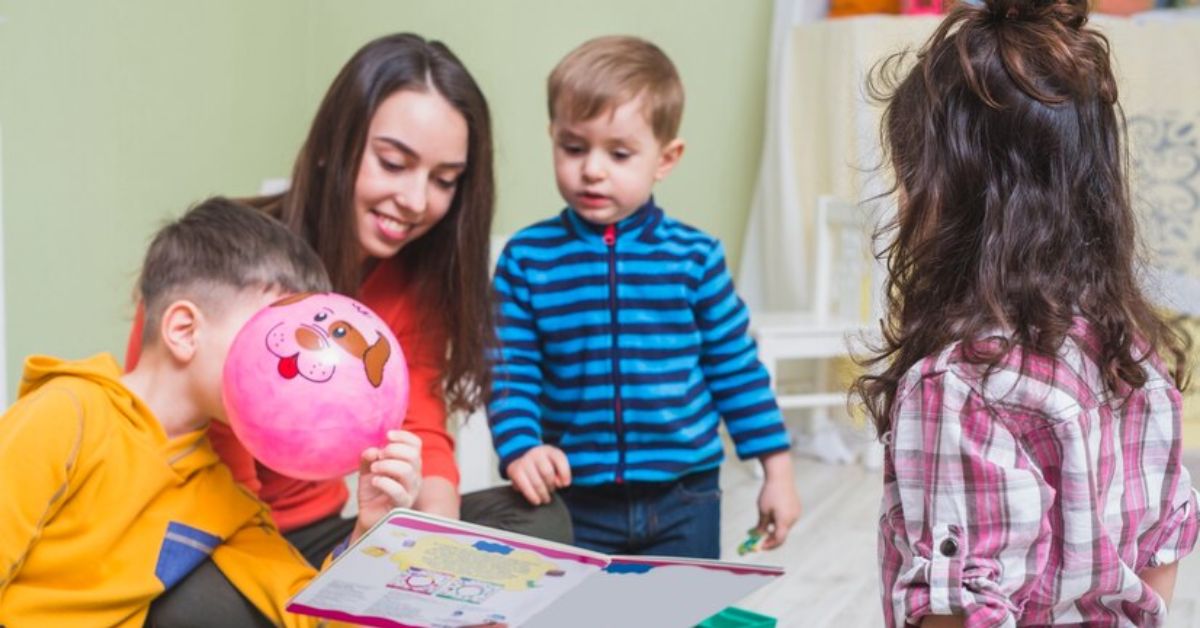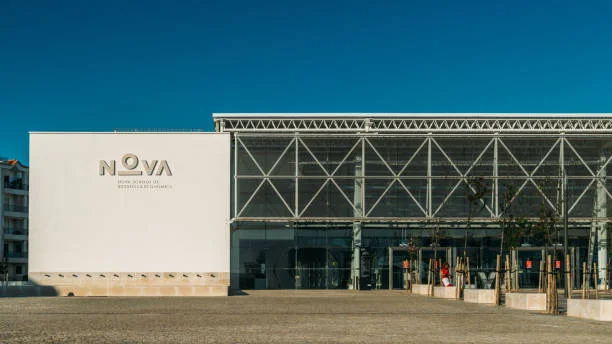EDUCATION
Nurturing Minds: The Importance of Early Learning Centres

The formative years of child development are critical. It’s during this period that the foundational blocks for learning, behaviour, and health are laid down. Parents and educators alike understand that investing in these early years can yield significant dividends for a child’s future. A key player in this investment is the early learning centre. These institutions provide more than just child care; they offer structured learning environments where children can explore, play, and learn essential skills.
What is an Early Learning Centre?
An early learning centre is an educational establishment that caters to children from infancy through to the preschool years. Here, educators focus on guiding children through their social, emotional, cognitive, and physical development. Unlike traditional daycare services, which predominantly focus on child minding, early learning centres are centred on a child’s development and preparation for schooling life.
The Role of Early Learning Centres in Childhood Development
Research consistently shows that high-quality early childhood education has a lasting impact on a child’s life trajectory. Early learning centres play a pivotal role in this by providing structured environments where children can learn through play. These settings are designed to foster curiosity, resilience, and a deep-rooted love for learning.
Children at these centres are also exposed to an array of social interactions. This early socialisation teaches children how to navigate relationships, understand emotions, and develop communication skills. All these experiences are critical for personal development and the acquisition of life skills.
Curriculum and Learning Approaches
The curriculum in an early learning centre often incorporates a blend of various pedagogical approaches. From Montessori to Reggio Emilia, educators employ techniques that stimulate the natural curiosity of children. Activities typically include interactive play, creative arts, language learning, and basic numeracy.
The educators at these centres are trained to identify the unique needs and interests of each child, tailoring activities that will support individual learning pathways. These early academic and social experiences lay the groundwork for smoother transitions into the structured school environment in later years.
Building Foundations for Future Learning
Early learning centres contribute to cognitive development in a way that shapes a child’s approach to education. Through early exposure to a structured learning environment, children can develop concentration, attention, and memory skills that will benefit them in formal schooling settings.
Furthermore, when children are given opportunities to learn through play, they are developing critical thinking and problem-solving skills. Early learning centres provide a host of resources and materials that children might not have access to at home, further enriching their learning experience.
Emotional and Behavioural Development
In an early learning centre, children are continuously learning about emotions and how to cope with them. It is a place where they can express themselves, learn about empathy, and understand the importance of sharing and cooperation. Through carefully guided activities and interactions, children can build confidence and self-esteem which are essential for later success.
The Importance of a Nurturing Environment
The environment within which children learn at early learning centres is just as important as the educational content. These centres are designed to be safe and welcoming, providing a nurturing space that aids in the overall well-being of every child. A positive environment instills a sense of security and belonging, which is integral for healthy childhood development.
Preparing for School and Beyond
One of the core objectives of an early learning centre is to prepare children for the transition into formal schooling. Through structured routines and activities that promote basic skills, children learn to adapt to the classroom environment. They become familiar with listening to instructions, following routines, and engaging with learning materials, all of which are crucial for their journey into primary education.
Celebrating Diversity
Given that early learning centres often host children from various backgrounds, they are ideal settings for promoting diversity and inclusion. Children learn to embrace differences, celebrate multiculturalism, and respect distinct family values. This early exposure to a variety of cultures and languages enriches their world view and fosters inclusivity.
Partnering with Families
Early learning centres recognise that parents and caregivers are children’s first teachers. Hence, these centres often work closely with families, keeping them informed about their child’s progress, and offering support for at-home learning. This partnership is critical as it ensures that learning is consistent and builds a bridge between the centre and home environments.
In Conclusion
There is little debate about the value of early childhood education. An early learning centre is not merely a convenience for working parents but a pivotal institution for nurturing young minds. These centres lay down the foundations for academic and life-long achievements by fostering holistic development in a structured yet nurturing environment.
Early learning centres stand as gateways to lifelong learning, and they play a defining role in shaping the adults that children will become. For any society looking to foster a well-educated, empathetic, and capable generation, the work starts in these early havens of education and growth.
Investing in early learning is an investment in our future, and the role that learning centres play in this cannot be overstated. They are not just places where children spend time; they are the nurseries of potential where the next generation finds its footing in an increasingly complex world.
EDUCATION
Nova Scola: Reinventing Education for a Complex Modern World

The Old Classroom Is Crumbling — Meet the Blueprint of the Future
Imagine stepping into a classroom where walls are made of curiosity, the curriculum breathes with relevance, and intelligence is not measured in rote but in ripple effects. This isn’t a utopian dream—it’s the philosophical engine behind Nova Scola, a model of education quietly emerging from the cracks of outdated schooling systems.
In a world where AI crafts essays, climate change shapes economies, and empathy matters as much as engineering, Nova Scola isn’t just a new method—it’s a cultural redesign of learning itself.
What Is Nova Scola? A Definition That Defies Tradition
Nova Scola, derived from Latin for “New School,” is an educational framework that discards the linear, test-driven traditions of industrial-era schooling and instead embraces interdisciplinary thinking, emotional intelligence, design-based learning, and real-world problem solving.
Unlike traditional systems which emphasize control, compliance, and standardized output, Nova Scola is designed for fluidity, creativity, and adaptability—traits essential in a VUCA world (volatile, uncertain, complex, ambiguous).
At its core, Nova Scola is not just a school. It’s a living ecosystem of learning where pedagogy aligns with complexity theory, systems thinking, and the neuroscience of curiosity.
There’s plenty more where that came from—browse our other helpful content!
Philosophical Roots: From Socrates to Systems Thinking
The seeds of Nova Scola can be traced to Socratic inquiry, Montessori’s child-led discovery, and the constructivist theories of thinkers like Jean Piaget and John Dewey. But it’s also deeply influenced by 21st-century philosophies—cybernetics, complexity science, and design thinking.
It draws on the idea that knowledge is not static but emergent. Much like ecosystems, learning environments must evolve, adapt, and co-create with their participants. In this view, a student isn’t a vessel to be filled but a node in a network, co-shaping knowledge through interaction.
Where Nova Scola Comes to Life: Applications Across Fields
Nova Scola isn’t confined to academia. Its principles have found fertile ground across industries:
In AI and Technology
Tech giants are embracing Nova Scola-style learning environments to train employees in ethical reasoning, collaborative design, and human-centered innovation. Coding bootcamps, for instance, are adopting project-based learning rooted in real-world challenges.
In Business
Corporations are realizing that innovation requires more than productivity. Leadership development programs are adopting Nova Scola’s principles to cultivate empathy, adaptability, and cross-functional fluency.
In Design and Architecture
Nova Scola inspires spatial design in learning environments. Classrooms become maker spaces, green zones, or digital hubs—environments that reflect the pluralities of the world students will enter.
In Society
Community-driven learning hubs, mutual aid education projects, and decentralized knowledge networks are taking cues from Nova Scola. These empower underrepresented voices, bridging gaps where traditional education systems failed.
Nova Scola vs. Traditional Education: A Comparative Lens
| Aspect | Traditional Model | Nova Scola |
|---|---|---|
| Goal | Standardized Knowledge | Adaptive Intelligence |
| Assessment | Exams & Grades | Portfolios, Reflections, Impact |
| Pedagogy | Teacher-Centered | Learner-Directed |
| Structure | Rigid Subjects | Interdisciplinary Themes |
| Learning Space | Static Classrooms | Dynamic, Community-Based Environments |
| Technology | Supplementary | Integrated as an Extension of Thinking |
While the old school teaches students to follow directions, Nova Scola teaches them to ask better questions.
The Road Ahead: Implications, Ethics, and Risks
Opportunities
- Equips students to tackle complex global challenges like climate resilience or AI ethics.
- Reduces educational inequality through more personalized, inclusive models.
- Fosters a culture of lifelong learning vital in fast-evolving industries.
Risks
- Access disparity: Without broad systemic support, only elite schools may implement it.
- Overreliance on tech: Learning ecosystems could become too dependent on digital environments, alienating those without access.
- Dilution of rigor: In efforts to be flexible, programs may struggle to maintain depth.
Ethical Considerations
How do we balance autonomy with guidance? How do we ensure emotional safety in radically open systems? These are the new moral questions Nova Scola must face.
Designing for Nova Scola: Best Practices
- Curate Experiences, Not Content
Build learning modules around real-world problems, not static textbooks. - Interdisciplinary Labs Over Lecture Halls
Replace siloed subjects with labs where history, technology, and ecology intersect. - Assess through Narrative
Use storytelling, prototyping, and peer reviews rather than timed tests. - Center the Learner
Co-design curriculums with students. Let them set their own inquiry paths. - Connect to Community
Bridge education with local ecosystems—social entrepreneurship, citizen science, or digital activism.
The Final Bell: Education as the New Frontier of Identity
Nova Scola isn’t just an upgrade to the education system. It’s a cultural reimagination of how we grow, think, and relate. In a society overwhelmed by speed and noise, this model offers slowness, reflection, and purpose.
It asks us to trade the blackboard for the world, the grade for growth, and the curriculum for curiosity.
Ultimately, Nova Scola’s is a mirror—revealing what kind of future we’re truly designing, and who we’re becoming in the process.
Loved this post? You’ll find even more just like it on our blog!
FAQs: Nova Scola Explained Simply
1. What does “Nova Scola” mean?
It means “New School” in Latin. It’s a modern approach to education focused on creativity, emotional intelligence, and real-world learning.
2. How is Nova Scola’s different from regular schools?
Instead of focusing on memorization and exams, Nova Scola’s encourages students to solve real problems, work together, and think creatively.
3. Where is Nova Scola’s being used today?
In innovative schools, online learning platforms, tech training programs, and even corporate leadership courses.
4. Is Nova Scola’s only for kids?
No! Its principles apply to people of all ages. Many businesses and universities are also adopting its flexible, human-centered methods.
5. Can public schools become Nova Scola’s?
Yes, but it requires change in policies, teacher training, and how we define success in education.
EDUCATION
The Power of Pen: Heartfelt Handwritten Notes

In today’s digital age, where communication often takes place through screens and keyboards, there’s a timeless and impactful tool that stands out: the handwritten note. The art of penning down thoughts, feelings, and expressions on paper holds a unique power to convey sincerity, warmth, and personal touch that can’t be replicated by emails or text messages. Let’s explore the profound impact of heartfelt handwritten notes and how they can strengthen relationships, uplift spirits, and leave a lasting impression.
The Personal Touch of Handwritten Communication
Handwritten notes offer a personal touch that digital messages simply cannot match. In a world inundated with generic emails and instant messages, receiving a handwritten note feels special and thoughtful. The effort put into crafting a handwritten message shows sincerity, care, and attention to detail, making the recipient feel valued and appreciated.
Emotional Connection and Authenticity
The act of writing by hand taps into a deeper level of emotional connection. Handwritten notes have the power to convey emotions, sincerity, and authenticity in a way that typed messages often lack. The imperfections, nuances, and individuality of handwriting add a layer of personality and warmth to the message, creating a genuine connection between the sender and the recipient.
Memorable Gestures That Stand Out
In a sea of digital noise, a handwritten note is a standout gesture that leaves a lasting impression. Whether it’s a thank-you note, a birthday card, a sympathy message, or a simple “thinking of you” gesture, receiving a handwritten note elevates the experience and makes the recipient feel truly special. Handwritten notes are memorable keepsakes that people cherish and revisit long after they’ve been received.
Strengthening Relationships Through Thoughtful Gestures
Handwritten notes play a significant role in nurturing and strengthening relationships. Whether in personal or professional settings, taking the time to write a heartfelt message shows thoughtfulness and consideration for the recipient. From expressing gratitude to offering encouragement or simply staying in touch, handwritten notes create bonds that go beyond mere words.
Christmas Magic Unveiled: The Timeless Appeal of Handwritten Notes
In the festive season, finding unique Christmas gifts that show personal connection and thoughtfulness can be tough. Handwritten notes offer a personalized touch that stands out in the digital age. Imagine pairing each gift with a heartfelt handwritten letter, sharing your thoughts, cherished memories, or gratitude for your relationship. This blend of a personal note with a thoughtful gift enriches the giving experience, making it truly memorable. Handwritten notes bring a layer of warmth and authenticity, making them one of the most impactful gifts for the holidays.
Professional Impact and Business Etiquette
In the business world, handwritten notes are a powerful tool for building professional relationships and standing out in a competitive landscape. Sending a handwritten thank-you note after a meeting, an interview, or a successful collaboration shows professionalism, respect, and attention to detail. It sets you apart as someone who values meaningful communication and goes the extra mile to make a lasting impression.
Therapeutic Benefits of Writing by Hand
Beyond the recipient’s experience, writing by hand also offers therapeutic benefits for the sender. The act of putting pen to paper has been linked to reduced stress, increased mindfulness, and enhanced creativity. Taking the time to write a handwritten note allows the sender to slow down, reflect on their thoughts, and express themselves in a meaningful way.
Timeless Tradition in a Digital World
Despite advancements in technology, the tradition of handwritten notes remains timeless and relevant. In a fast-paced digital world, handwritten notes serve as anchors of tradition, nostalgia, and human connection. They bridge the gap between the past and the present, reminding us of the beauty and significance of slow, intentional communication.
Embrace the Power of Pen
As you navigate the digital landscape of communication, don’t underestimate the impact of the power of pen. Embrace the art of handwritten notes to convey sincerity, foster connections, and make a lasting impression on those around you. Whether it’s a simple “thank you” or a heartfelt message, unleash the power of pen to spread joy, kindness, and warmth in a world that can always use more heartfelt gestures.
EDUCATION
Advantages of Implementing a Cloud Based Learning Management System

Have you ever pondered the impact a cloud based learning management system (LMS) could have on your education or training program? In an evolving digital world, traditional learning methods are being transcended by more accessible, flexible, and scalable solutions.
Welcome to the world of cloud-based LMS, a revolutionary tool that will change the way that knowledge is delivered and used. By reading this blog post, you’ll learn more about its features, benefits, and why it’s becoming the first choice for both teachers and students.
What’s a Cloud Based Learning Management System Anyway?
Alright, let’s start with the basics. A cloud-based learning management system is like your virtual classroom buddy.
It’s a software platform that helps you create, manage, and deploy your learning content online. Think of it as your digital hub for all things learning-related.
Flexibility at Your Fingertips
The freedom that a cloud-based LMS gives you is one of the best things about it. No longer being stuck in one place or with one device.
Since everything is stored in the cloud, you can get to your schoolwork from anywhere with an internet connection at any time. That way, you can learn whenever you want, whether you’re at home or out and about.
Say Goodbye to Paper Trails
Remember the days of lugging around heavy textbooks and piles of paper? Yeah, those days are long gone, my friend. With a cloud-based LMS, everything is digital.
Say hello to a clutter-free learning environment where you can kiss those paper cuts goodbye. Plus, it’s way easier to keep track of your progress when everything is organized online.
Collaboration Made Easy
Who says you have to learn by yourself? A cloud-based LMS makes it easy for people to work together.
You can share files, have conversations, and work together in real time, whether you’re working on a group project or want to get feedback from your peers. As if you had your virtual study group right there with you.
Stay Up-to-Date with the Latest Content
In today’s evolving education and training scene, it’s crucial to stay up-to-date for success. Adopting a cloud-based Learning Management System (LMS) offers a powerful way to keep current. With a cloud-based LMS, the concern of being outdated vanishes.
With automatic updates and new features, online education platforms ensure that learners and educators always have access to the latest resources, eliminating the need for manual updates. This marks the end of the era of outdated textbooks.
Now, we are in a time where educational content, including automated assessment, is refreshed with the newest trends, discoveries, and best practices. This not only enriches the learning journey but also equips learners with the skills to succeed in a world that prioritizes adaptability and continuous learning.
Harnessing the Power of a Cloud Based Learning Management System: A Conclusion
In conclusion, embracing a cloud based learning management system offers unparalleled advantages in our digital age. It isn’t about transitioning from traditional to digital; it’s a complete overhaul of the learning experience.
The effects are huge for both teachers and students, with benefits like access from anywhere at any time, less physical clutter, better teamwork, and constant content updates. The system not only makes learning easier, but it also improves it, making it faster, more fun, and easier to get to than ever before.
Want to learn more? Don’t forget to explore our other articles before you leave!

 ENTERTAINMENT1 week ago
ENTERTAINMENT1 week agoExploring the Kristen Archives: A Treasure Trove of Erotica and More

 TECHNOLOGY4 months ago
TECHNOLOGY4 months agoBlog Arcy Art: Where Architecture Meets Art

 LIFESTYLE1 week ago
LIFESTYLE1 week agoWho Is Sandra Orlow?

 LIFESTYLE4 months ago
LIFESTYLE4 months agoThe Disciplinary Wives Club: Spanking for Love, Not Punishment

 ENTERTAINMENT5 days ago
ENTERTAINMENT5 days agoKiss KH: The Streaming Platform Redefining Digital Engagement and Cultural Currents

 GENERAL4 months ago
GENERAL4 months agoWhat are stories of male chastity? A Comprehensive Guide

 ENTERTAINMENT4 weeks ago
ENTERTAINMENT4 weeks agoMonkeyGG2: Your Personal Gaming Hub

 GENERAL5 months ago
GENERAL5 months agoSmartSchoolBoy9: The Rise of a Viral Chasing Kid Sensation












